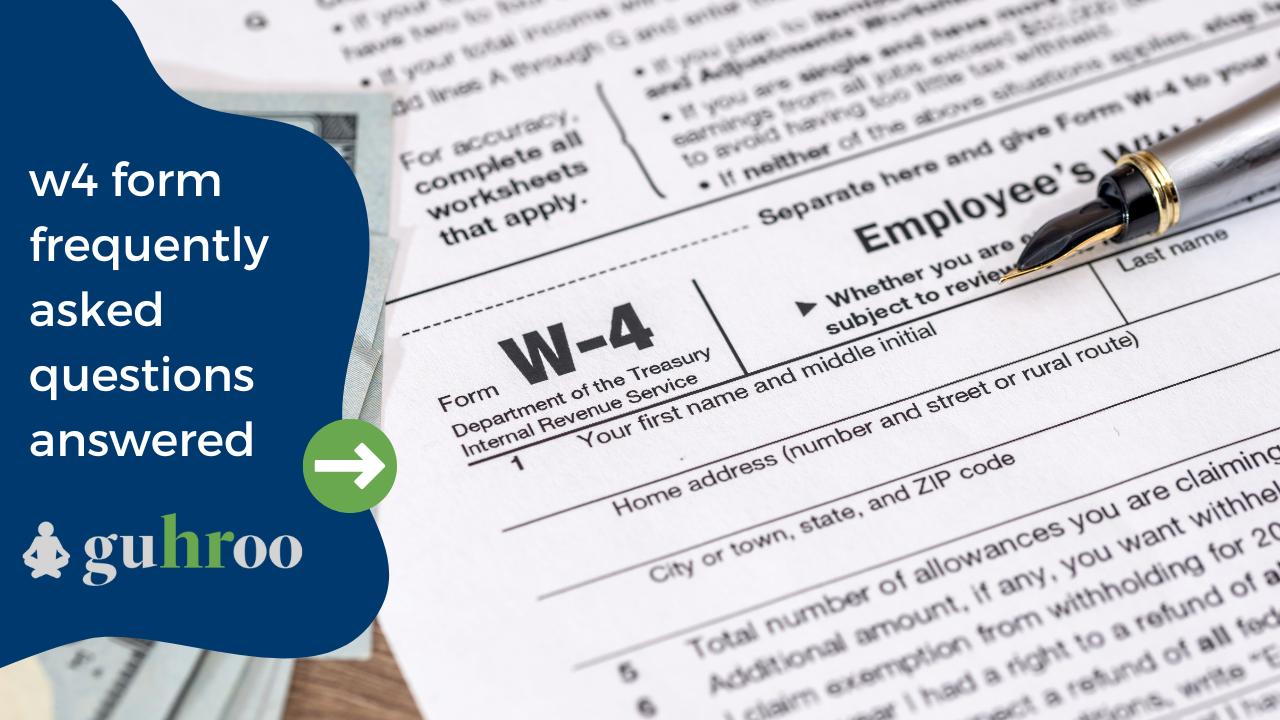Since the IRS form W4 was revised recently, you might be wondering what’s different about it or how to fill it out correctly. We’ve collected answers to a list of the most frequently asked questions (FAQ) about the Form W4 here.
List of W4 Form FAQ:
“Why should I fill out a W4 form?”
Filling out this form correctly helps your employer to withhold the correct amount of money from your pay to fulfill your tax obligations. Ideally, if your information is correct, you would pay enough taxes during the year to avoid owing a lump sum to the Internal Revenue Service the following year. It can be easier than budgeting for your annual income tax payment on your own. If you don’t fill it out correctly, and if your employer doesn’t withhold and pay the right amount of taxes for you, then you could be unpleasantly surprised by your tax owed the next time you file.
“What information do I need to fill out my W4 form?”
The form is relatively simple and should take less than five minutes to complete if you gather all the necessary information before you begin. You will want the following information handy:
– Complete legal name
– Legal physical address
– Social Security number
– Filing status (more on this below)
– W4 worksheet (included with the form)
– Employer name
– Beginning date of employment
– Employer’s Employer Identification Number (EIN)
“Why aren’t any federal taxes being withheld from my check?”
The credits you claim, your pay rate, and the number of dependents you claim all factor into the amount of federal taxes (or lack thereof!) withheld from your paycheck. It is a best practice to use the IRS Withholding Calculator to determine what your personal tax liability is and how much you should see withheld from your paycheck. If you earn less than a certain amount, which can vary based on changing tax laws, or if you legally claim dependents, the credits you’re entitled to may be greater or equal to what you’d otherwise have to pay.
If you claim exemption or claim more dependents than you are legally entitled to, you might avoid paying taxes each pay period, but you will eventually have to make up the difference when taxes are due. If you suspect that not enough is being withheld from your pay, follow the instructions that come with the W4 to find out or consult your employer’s payroll department.
“Who qualifies for the Head of Household filing status?”
Most filers choose Single or Married Filing Jointly. For those who qualify, however, choosing to file as a Head of Household can legally and significantly reduce their federal income tax liability.
The IRS will generally allow you to claim head of household filing status as long as you’re unmarried or considered unmarried on the last day of the year (including widowed persons) and pay more than 50% of the costs of keeping up a home for yourself and for a qualifying individual who resides with you for more than half the year (for example, a child who is a student). If the qualifying individual in question is your dependent parent, they don’t have to live with you.
“How do I know if I’ve paid enough qualifying expenses to claim head of household filing status?”
To determine the cost of keeping up your home for federal tax filing purposes, you’ll need documentation of the following:
– property tax
– mortgage interest expense
– rent
– utility charges
– repairs and maintenance
– property insurance
– food eaten in the home
– other household expenses
If the amount of household expenses you paid is more than the amount contributed by any others, then you are considered to have paid more than half the cost of keeping up the home.
“When do I need to file a W4 or make changes to it?”
If your marriage status changes, if you have a child, or your employment changes (including taking an additional job), you should submit a new W4 form.
If you find your withholdings were too much or too little the previous tax year, and your circumstances are projected to be similar for the current tax year, you’ll want to make adjustments accordingly on a new W4. These changes will take effect within one to three pay periods of submitting your new W4.
“If I have a W2, do I have to fill out a W4?”
Yes! The forms have separate purposes. The W4 tells employers how much to withhold from the employee’s paycheck. The W2 tells the IRS what an employee earned in the previous year. Every employee is required to file a W4 (provided by their employer), while small business owners and large businesses are required to submit a W2 for each employee.
“What ‘other adjustments’ are they talking about in Step 4 on the W4?”
This section is optional, but it has space for lots of other details that can affect your withholding decisions. Income that didn’t come from employment (retirement, dividends, inheritance, etc.), itemized deductions, and any extra withholding you might choose each pay period. Some people choose to have extra withheld after they were unpleasantly surprised with a larger-than-expected tax bill in a prior year.
“I’m an employer. What if my new employee does not submit a W4?”
Since 2020, new employees who do not furnish a W4 will be treated as single filers and no other adjustments will be taken into account.
“Are employees paid before 2020 required to furnish a new W4?”
No. If employees paid prior to 2020 don’t furnish a new W4, their withholding will continue to be based on a previously furnished valid form. Employers can use the IRS’s online tool, the Income Tax Withholding Assistant or use Publication 15-T to determine withholding for your employees.




